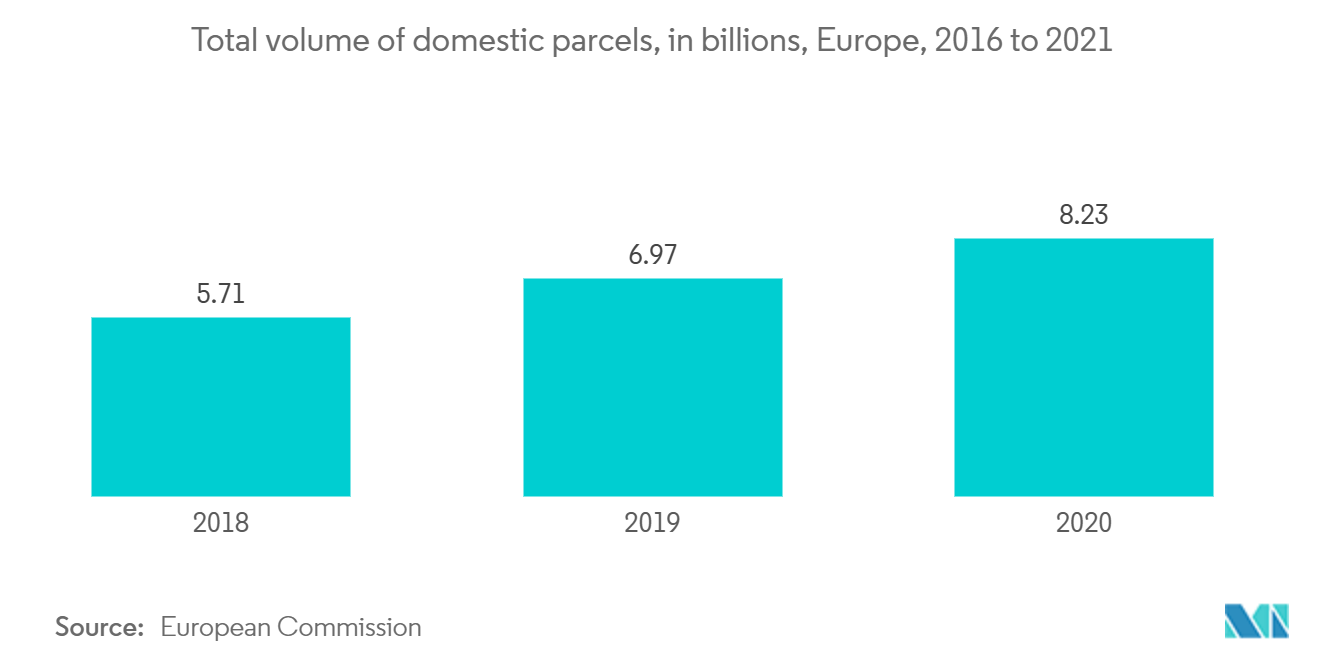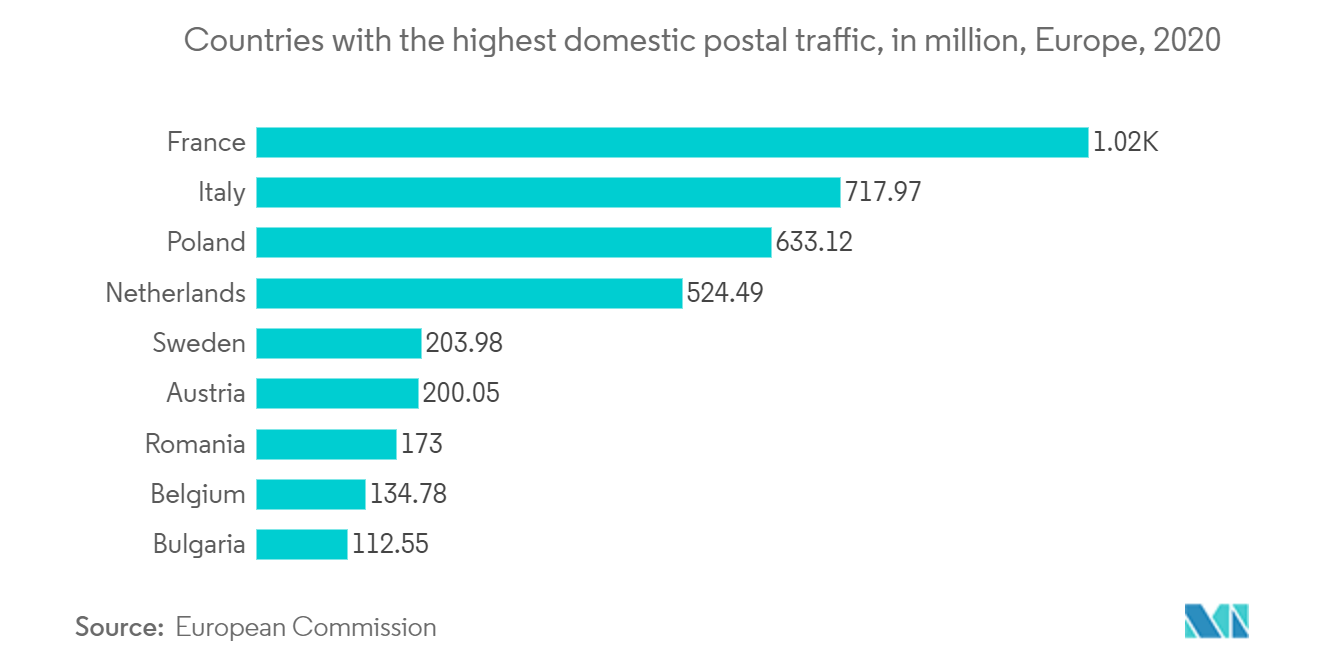Market Trends of Europe Postal Services Industry
This section covers the major market trends shaping the Europe Postal Services Market according to our research experts:
The Postal and Delivery Sector Is Significant to the EU Economy
The postal and delivery sector in the EU makes a variety of contributions to the economy of the Union, including the fact that it generates revenues of EUR 79 billion (USD 84.38 billion) annually, which equates to 0.5% of the EU's total GDP, and that it employs about 1.7 million people across the EU or 0.8% of the employed population.
The postal and delivery sector is an enabler of e-commerce domestically, intra-EU, and globally - a fast-growing industry in Europe and was worth EUR 344 billion (USD 367.44 billion) in 2019. The incumbent postal operators (universal service providers) are typically one of the biggest employers in their countries.
The postal and delivery industry also contributes significantly to some specialized markets, such as the distribution of drugs to elderly or rural populations, as is done by La Poste in France.
There are numerous players operating in the EU's postal and delivery industries, providing a greater significance in the industry. The universal service providers, rival companies engaged in the letter delivery industry, logistics and express companies (like UPS and FedEx), and alternative delivery companies (like Amazon) are among them.

Digital Communication Is Transforming the Postal Industry in the EU
The postal sector is not exempt from technological change. In fact, it is likely one of the sectors that are most impacted. Europe's postal industry is being impacted by digital change on two fronts. On the one hand, the demand for letters is declining as digital communication channels (the so-called "e-substitution") take the place of paper-based ones. On the other hand, the ability to order things online and have them delivered is raising the demand for packages and deliveries.
E-substitution occurs when electronic communication methods take the place of conventional letter-post communication. Depending on users' willingness to switch from traditional letter post to electronic communication and how convenient it is to do so, for example, different technological conditions (use of the internet at home, broadband penetration, etc.) and policy conditions, the speed and extent of e-substitution still vary across countries in the region.
The most notable example of e-substitution is Denmark. The EU saw the largest volume drop in posts because of the robust e-government digitalization that has been required in the country since 2014.
In recent years, letter post traffic has decreased, and e-substitution has increased to varying degrees in other Member States. Letter post volumes in the EU decreased on average by 3% a year. Germany is an exception, where letter post is still one of the primary official routes of communication between residents, government, and corporations, mostly due to worries about digital security.


